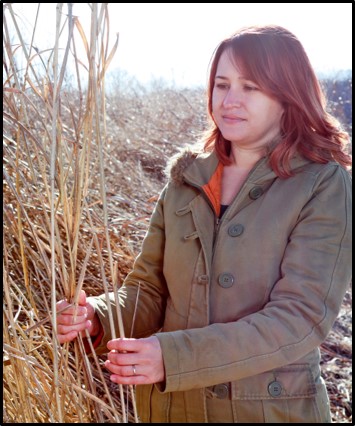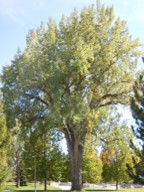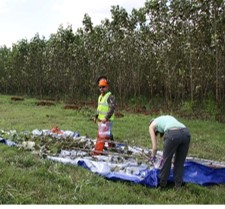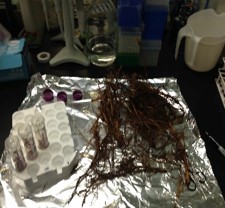Explore BiGG Data projects listed below offer research training in analysis of big data to fully understand ramifications of microbiomes, metabolomes, and genetics of One Health systems. By the end of the REEU, Fellows will have performed multiple bioinformatics tasks to answer One Health questions including, but not limited to, quality control/filtering, sequence alignment/assembly, protein and coding analysis, and basic statistics. Students will also receive training in communicating research in these complex systems to the other scientists and the general public.
2023 Research Opportunities
Project:
The goal of this project was to determine the changes in the microbiome of black walnut (Juglans nigra) when influenced by both drought and infection due to Geosmithia morbida. We hypothesized that there would be a shift in microbial community composition between drought and well-watered treatments, that rewatering drought-stressed trees would not change microbial community composition from the drought treatment, and that dominant bacterial taxonomic and fungal functional groups would differ between treatment types. Our results indicated that fungal and bacterial community composition did shift among treatments.
Faculty Mentors:


Graduate Mentors:





REEU Scholars:
- Julia Andersen
- Sadra Williams
Project:
Populations with higher genetic diversity have greater resiliency to changing environments. In the case of Aedes vexans, a floodwater mosquito, standing water from rainfall creates necessary breeding grounds for mosquito larvae. However, too much precipitation can wash away their larval habitats. Previous studies demonstrated that Aedes vexans prefer low precipitation environments suggesting that increased rain in their habitat may have resulted in specific adaptations to higher rainfall. We propose this dynamic locally affects genetic diversity within the species. Specifically, we hypothesize that locations experiencing high amounts of flooding and precipitation within the last five years of sample collections will have greater diversity than those locations that experience drought or few flooding events. After collecting Aedes vexans samples and genomic amplification, we used identified single nucleotide polymorphisms to conduct a discriminant analysis of principal components and an analysis of molecular variance. These statistical analyses predict the presence or absence of population clustering, with separate analyses evaluating different climate factors, such as precipitation and flooding. In our study, we found there were genetic differences between sample locations. Understanding these genetic and environmental associations will aid in furthering research and interventions that limit the role of Aedes vexans as a disease vector..
Faculty Mentors:


Graduate Mentor:





REEU Scholars:
- Maya Albert
- Angelique Robinson
Project:
To make necessary long-term conservation management decisions for a species, it is critical to understand genetic diversity across populations. While much work has been done in applied conservation strategy, limited genetic work has been done to lay the groundwork for tackling restoration and conservation of Atlantic white-cedar (Chamaecyparis thyoides). This tree is native to the Eastern U.S. and is considered a keystone member of coastal Atlantic white-cedar bog ecosystems. However, it is considered imperiled to extinct in some states across much of its native range due to anthropogenic habitat fragmentation. Genetically informed restoration is critical to re-establishing resilient, ancestral populations of Atlantic white-cedar. Prior research, although limited, indicates noticeable phenotypic differences between individuals from northern and southern populations of Atlantic white-cedar. Utilizing SNP markers and analyses such as population clustering (STRUCTURE), population statistics, genetic differentiation (FST), and isolation by distance, this work investigates genetic differences between these northern and southern populations. Our results support the presence of population structure and genetic differences between northern and southern Atlantic white-cedar populations. Results from this study will impact future conservation management and restoration decisions as genetic implications of habitat reduction and fragmentation may result in progressive maladaptation and a reduction in fitness.
.
Faculty Mentors:


Graduate Mentors:






REEU Scholars:
- Elisabeth Leung
- Olivia Degreenia